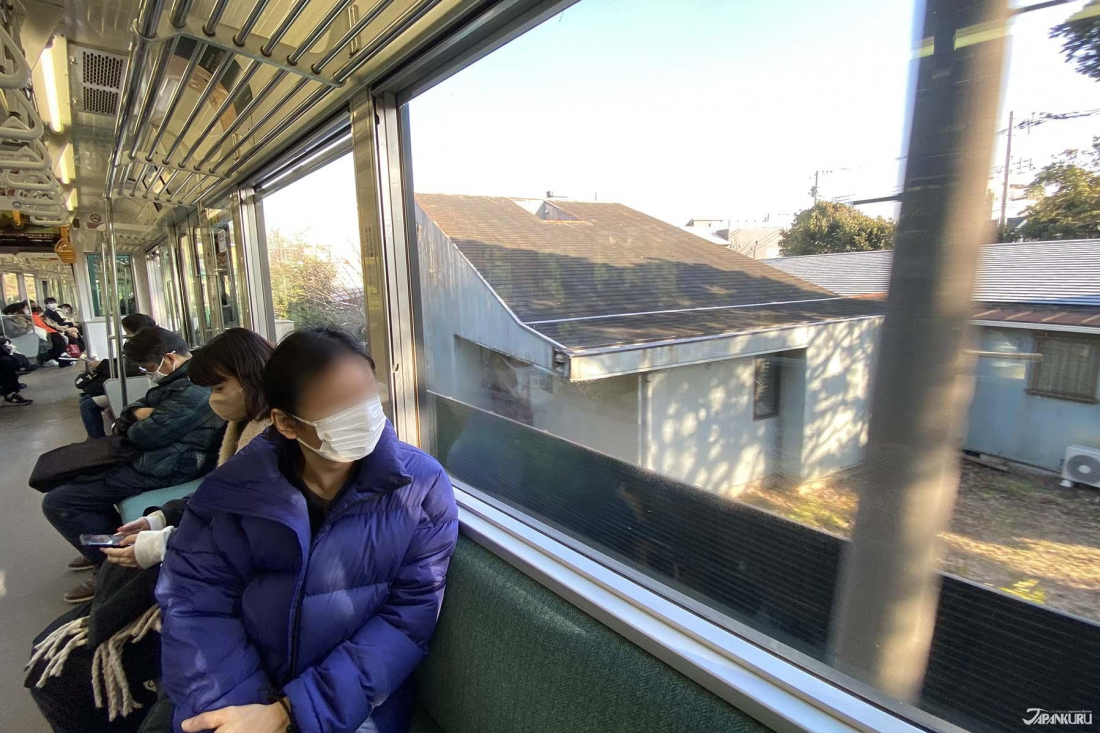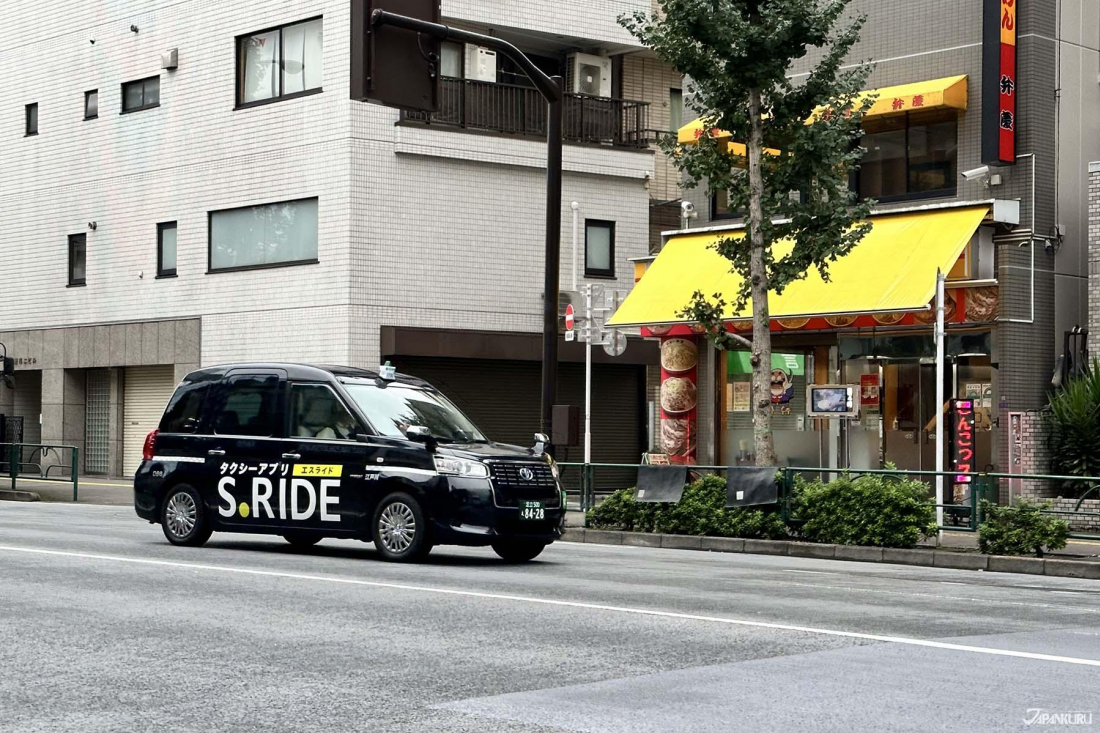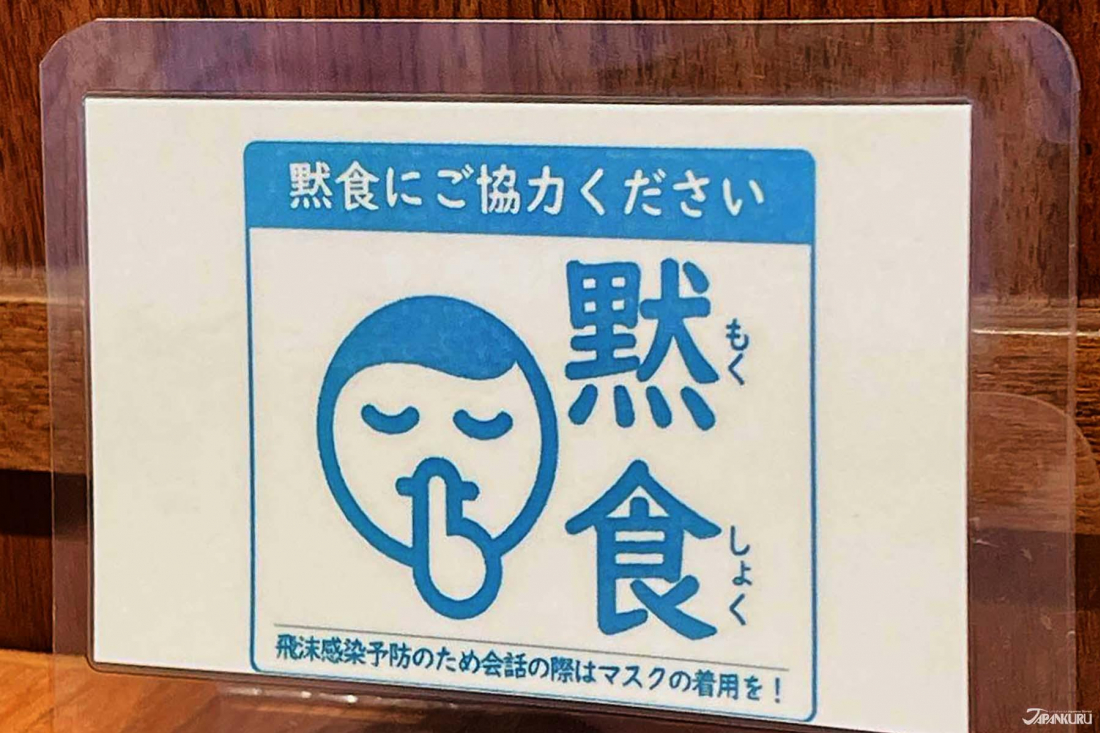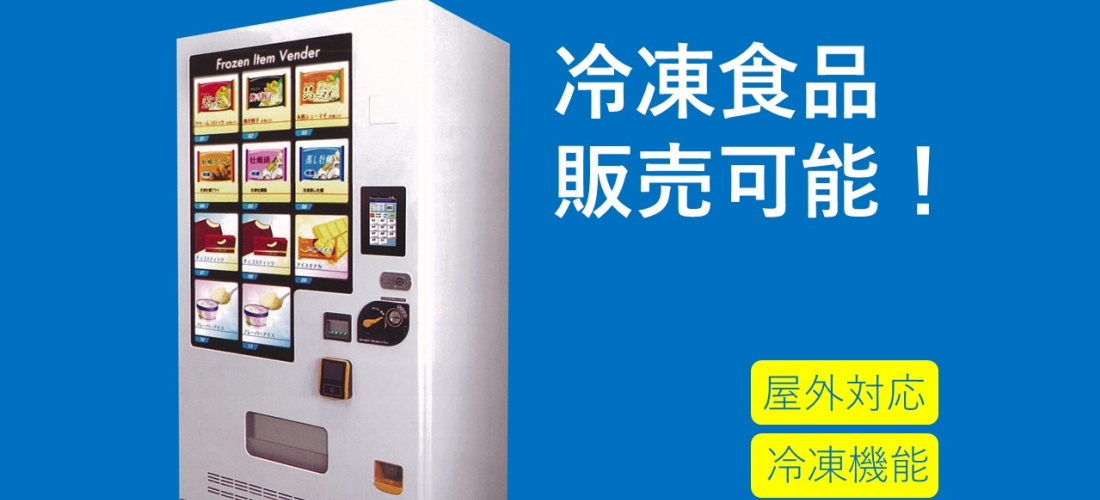CONTENTS
After years of covid pandemic lockdown and closed borders, Japan is finally open to visitors. As travelers start trickling back in, this is what Japan looks like “post-covid.”
Ready to Go to Japan Already? First, Keep in Mind…
After firmly closing its borders for almost three years, Japan is open again, and ready to welcome a new wave of excited tourists. But, like so many places around the world, some things have changed, appeared, or disappeared over these tumultuous months. So if you're planning a trip to Japan any time soon, we've gathered together a few tips that you might want to know before you hop on a plane headed for the land of the rising sun!
① Masks Are Still a Must Indoors!
Masks have been more common in Japan than in other parts of the world since long before covid started, so perhaps it's no surprise that mask-wearing is holding on longer here than elsewhere. Indoor spaces like shops and restaurants still have signs up asking customers to stay masked unless they're actively eating or drinking, and you may be denied entry if you try to enter maskless. Similarly, in public spaces like trains, buses, or even taxis, going maskless will earn you plenty of stinging side-eye, and possibly even some harsh words from fellow passengers. Despite government attempts to convince Japanese citizens that masks are unnecessary outdoors, they're still more common than not even out in the open air! If you find yourself in Japan without a mask, you can always head to the nearest drugstore or convenience store to pick up a pack. (Then again, is it okay to enter a convenience store without a mask in order to go buy masks? That's a true dilemma.)
Trains can get awfully crowded in Japan, but even when they're mostly empty, you're still expected to wear a mask!
Even Kyoto's maiko (geisha) have been wearing masks.
② Temperature Checks & Hand Sanitizer Are Still the Standard
Just like much of the world, the covid pandemic inspired most Japanese facilities to install hand-sanitizing stations and thermometers by the entrance, all over the country. With the pandemic calming down, these areas aren't as strictly regulated as they once were, but it's a good idea to keep an eye out for them anyway!
Thermographic cameras are ubiquitous!
Some hotels and guesthouses provide a variety of disinfectant products for guests to use themselves. In Japan, temperatures are generally taken under the armpit, so thermometers can be shared!
③ Plastic Bags Cost Money Now
Despite the country being quite strict about recycling, travelers who have gone shopping in Japanese convenience stores and 100 yen shops will know that Japan has a bit of a plastic packaging problem. With no sign of that changing anytime soon, the government decided back in the summer of 2020 to take a different step in an eco-friendly direction and start charging for plastic bags at most stores. It can be a little inconvenient, especially for sightseers, but charging for bags is now standard practice everywhere from convenience stores to supermarkets. Now, when you go to pay, the cashier will generally ask:
(Reji-bukuro irimasu ka?)
Which means:
Do you need a bag?
It's very common to see locals carrying a compact reusable shopping bag around with them, to avoid paying for bags they don't need, and after 2 1/2 years, most complainers have gotten over the annoyance by now. So if you hear a question in Japanese from the cashier, they're probably either asking if you need a bag (袋/fukuro), or if you have a point card (they use the English term in Japanese). Bag prices depend on the size, but they range from about 3 to 12 yen. It's not a big deal to pay for one or two, but they add up, so we recommend bringing a reusable shopping bag, or picking one up from a 100 yen store.
④ Acrylic Barriers Remain Common
In Japan, restaurant tables are still bordered with clear sheets, and restaurants with counters (like this beef bowl shop) have each seat separated by plastic screens. (It makes you wonder, maybe Ichiran saw this coming all along?)
Cashiers are often found on the opposite side of transparent vinyl, which makes sense as a covid prevention measure, but the vinyl can sometimes make it awfully hard to hear soft-spoken restaurant staff.
⑤ Tablets & Order Screens Are Becoming Standard
Ordering food via a tablet on the table isn't entirely a new concept for Japanese restaurants, but the number of establishments using these automated systems sure has exploded since the pandemic encouraged cutting down on face-to-face interactions. Unfortunately, it's still pretty common to find electronic menus only available in Japanese, so in those cases you'll just have to call a waiter to order. They might still have English-language paper menus available! The picture above is one of those Japanese-only ordering tablets, found at the Roppongi location of udon restaurant Tsurutontan.
⑥ Cashless Payment Systems Are All the Rage!
Just a few years ago, travelers visiting Japan were frequently surprised at how often cash was literally the only payment option. Cash is king in Japan, especially coins! But during the pandemic, the general public started to realize just how dirty money can get. (Literally.) Between general reluctance to touch germy cash, and some strong government pushes to encourage the change, the popularity of cashless payment methods has finally spread in Japan. Credit cards are gaining ground, but a lot of people will pay for just about everything with their trusty IC card, generally a transportation card like Suica or Pasmo. Convenience stores, vending machines, gift shops, and lots of other places will now accept payment via IC card, and in many train stations, the majority of the ticket gates only accept IC card payment instead of paper tickets.
The other money trend in Japan is mobile payment systems, which use scannable barcodes and QR codes on your phone to pay at participating restaurants and retailers. For a little while, when these systems first started establishing themselves in Japan, there were quite a few different companies fighting for dominance in the Japanese market, including Line Pay, Rakuten Pay, Merupay, but these days the winner seems to be an app called PayPay. Stores that accept PayPay generally have a visible QR code with red P PayPay logo near the cash register.
With cashless payment options becoming more and more accepted in shops all over Japan, and especially in the big city, you can just charge up your IC card and your payment app and spend a day in Tokyo without ever touching cash! (Some shops are still cash-only, though, so if you're worried you might want to ask the staff before you order anything!)
⑦ Your Taxi Might Just Be a Japan Taxi
Introduced just before the pandemic really took hold, Toyota's "JPN Taxi" has a "universal design" meant to remind passengers of a classic London cab, and was originally created to provide a comfortable ride for the wide range of visitors who were supposed to be arriving shortly for the Tokyo Olympics. The Olympic Games sure didn't go as planned, but the taxis did, and passengers looking for spacious seats and a variety of payment options can now flag one down around Tokyo.
Tokyo taxi fares, previously dubbed "scarier than a horror movie," have also been lowered to make this transportation method a little more accessible. The minimum fare (for the first 1.052 km) is now only 410 yen, almost half as expensive as before! But the meter is likely to go up faster than you might expect, so taxis are still best used for short distances, especially if you're in a hurry or have a lot to carry.
In a JPN Taxi, you can actually pay via the monitor on the back seat. Very convenient!
⑧ Something Is Missing From Shinto Shrines…
Overall, Shinto shrines across Japan haven't changed all that much over the course of the pandemic. Unfortunately for visitors who love ancient traditions, the one thing that seems to have changed shape or disappeared altogether from most shrines is the chozuya (手水舎), or hand-washing fountain. It might seem illogical, right? Shouldn't we all be washing our hands more during the pandemic? The problem is that these hand-washing stations generally use shared ladles, and tradition dictates that you actually pour a little of the water in your mouth and spit it out. This hand-washing fountain is more about spiritual purification than any actual germ-fighting. Some shrines' chozuya are starting to open up again these days, but many of them only let visitors put their hands directly under the stream of water now!
⑨ Everyone Whips off Their Masks for This One Moment
If there's just one moment when you can dare to take your mask off without judgment during your trip to Japan, it's this: picture time. Of course, some people leave their masks on without thinking about it, so it's not unusual to see people saying "cheeeese" right through their masks! But it's widely accepted at this point in the pandemic – you can take off your mask while you take a picture, as long as you put it back on afterward.
Leave it on while taking pictures, then take it off when it's your turn to pose!
We have to admire the dedication of these kids on a school trip to Kyoto, but it does seem a little sad that their group photos will just be a sea of masks.
⑩ Long Time No See, Tax Free!
With tourists banned from entering the country for so long, tax rebate counters in big shops and entire duty-free shops closed down during the pandemic. When we saw a big red TAX-FREE sign for the first time in almost three years, it was such a nice surprise that we had to take a picture!
⑪ Money Exchange Machines Are Making a Comeback
Another disappearance from the days of pandemic lockdowns: currency exchange machines can be found all over the place once again. This particular automatic machine can be found in front of the Don Quijote in Asakusa – perfect for anyone hoping to stock up on snacks and souvenirs inside the shop.
⑫ You Might Encounter “Silent Eating”
It's hard to stop people from chatting while they eat together, but some restaurants certainly tried during the height of the pandemic, especially when it seemed like it was a choice between "silent eating" and closing down the shop. This trend gave birth to a new word, "mokushoku" (黙食/silent eating), and mokushoku quickly spawned some copycats as well: mokuyoku (黙浴) means silent onsen bathing, mokutore (黙トレ) means silent gym training, and mokukara (黙カラ) means silent karaoke… or at least karaoke with a little less screaming the lyrics. If you see these signs anywhere, you'll know that they're asking you to be quiet as an infection prevention measure. Whether or not anyone around you will be following the rule, however, you'll have to see for yourself.
Now that Japan is finally open to tourists again, these twelve updates should help make your next trip go smoothly, even after all this time! So now the real question is this: where should you go first? If you're not sure what part of Japan to visit, we have Japan travel recommendations for every month of the year!
For more info and updates from Japan, check Japankuru for new articles, and don't forget to follow us on Twitter, Instagram, and Facebook!
COMMENT
FEATURED MEDIA
VIEW MOREMAP OF JAPAN
SEARCH BY REGION

LATEST
VIEW MOREEVENT CALENDAR
VIEW MOREMOST POPULAR
 Tokyo Winter Recommendation: Don’t Miss Tokyo Mega Illumination, Japan’s #1 Light Show
Tokyo Winter Recommendation: Don’t Miss Tokyo Mega Illumination, Japan’s #1 Light Show ป้ายยาสินค้าน่าซื้อในร้านขายยาญี่ปุ่น | KOWA ผลิตภัณฑ์เพื่อสุขภาพสำหรับคนยุคใหม่
ป้ายยาสินค้าน่าซื้อในร้านขายยาญี่ปุ่น | KOWA ผลิตภัณฑ์เพื่อสุขภาพสำหรับคนยุคใหม่ Okinawa Family Road Trip: Japanese Glasses Shopping at San-A Urasoe West Coast PARCO CITY, Discount Coupons, & Okinawa Sightseeing with JINS
Okinawa Family Road Trip: Japanese Glasses Shopping at San-A Urasoe West Coast PARCO CITY, Discount Coupons, & Okinawa Sightseeing with JINS



























 >> Find out more at Japankuru.com! (link in bio)
#
>> Find out more at Japankuru.com! (link in bio)
#





 The Robot Restaurant is gone, but the Samurai Restaurant is here to take its place. Check it out, and don't forget your coupon!
The Robot Restaurant is gone, but the Samurai Restaurant is here to take its place. Check it out, and don't forget your coupon!
 신주쿠의 명소 로봇 레스토랑이 사무라이 레스토랑으로 부활! 절찬 쿠폰 발급중
신주쿠의 명소 로봇 레스토랑이 사무라이 레스토랑으로 부활! 절찬 쿠폰 발급중
 18歲以上才能入場的歌舞秀,和你想的不一樣!拿好優惠券去看看~
#tokyo #shinjuku #samurairestaurant #robotrestaurant #tokyotrip #도쿄여행 #신주쿠 #사무라이레스토랑 #이색체험 #할인이벤트 #歌舞伎町 #東京景點 #武士餐廳 #日本表演 #日本文化體驗 #japankuru #japantrip #japantravel #japanlovers #japan_of_insta
18歲以上才能入場的歌舞秀,和你想的不一樣!拿好優惠券去看看~
#tokyo #shinjuku #samurairestaurant #robotrestaurant #tokyotrip #도쿄여행 #신주쿠 #사무라이레스토랑 #이색체험 #할인이벤트 #歌舞伎町 #東京景點 #武士餐廳 #日本表演 #日本文化體驗 #japankuru #japantrip #japantravel #japanlovers #japan_of_insta
 코지마 x 빅 카메라 쿠폰으로 일본 가전 제품 쇼핑하기
#pr #japankuru #japanshopping #kojima #biccamera #japaneseskincare #yaman #dji #osmopocket3 #skincaredevice #日本購物 #美容儀 #相機 #雅萌 #日本家電 #일본여행 #면세 #여행꿀팁 #일본쇼핑리스트 #쿠폰 #일본쇼핑 #일본브랜드 #할인 #코지마 #빅카메라 #japankurucoupon
코지마 x 빅 카메라 쿠폰으로 일본 가전 제품 쇼핑하기
#pr #japankuru #japanshopping #kojima #biccamera #japaneseskincare #yaman #dji #osmopocket3 #skincaredevice #日本購物 #美容儀 #相機 #雅萌 #日本家電 #일본여행 #면세 #여행꿀팁 #일본쇼핑리스트 #쿠폰 #일본쇼핑 #일본브랜드 #할인 #코지마 #빅카메라 #japankurucoupon























































